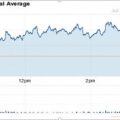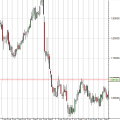Dow Jones Today – Current Price Of The DJIA Stock Index
Understanding the Dow Jones Industrial Average (DJIA)
About Dow Jones
The Dow Jones Industrial Average (DJIA), commonly referred to as the Dow Jones Index, is one of the most well-known and widely followed stock market indices in the world. It serves as a barometer for the overall health of the U.S. economy and is a critical tool for investors, analysts, and economists who want to understand “Dow Jones today” trends.
History and Background
The Dow Jones Index was created by Charles Dow, a co-founder of Dow Jones & Company, and his business associate Edward Jones. The index was first calculated on May 26, 1896, making it one of the oldest stock indices in existence. Initially, the index included just 12 companies, primarily from the industrial sector, which was the dominant economic force at the time. Today, the DJIA comprises 30 large, publicly traded companies from various sectors, reflecting the broader U.S. economy.
Composition and Calculation
The DJIA is a price-weighted index, meaning that the index is calculated based on the stock prices of its 30 constituent companies rather than their market capitalizations. This unique method sets it apart from other indices like the S&P 500, which are market-cap weighted. The formula for calculating the DJIA involves summing the prices of all 30 stocks and dividing the total by the Dow Divisor, a factor adjusted for stock splits and other changes to maintain the index’s consistency.
Significance of the Dow Jones Today
Understanding the movement of the “Dow Jones today” is crucial for investors and analysts. The DJIA is often seen as a snapshot of market sentiment and economic trends. When the Dow Jones rises, it typically indicates investor confidence and optimism about economic growth. Conversely, a declining Dow Jones can signal investor concern about economic stability or future prospects.
Some of the biggest fluctuations (crashes) of the Dow Jones index:
1. Panic of 1901
- Date: May 1901
- Event: A speculative bubble in railroad stocks burst.
- Impact: The market experienced a sharp decline, leading to significant financial losses.
2. Panic of 1907
- Date: October 1907
- Event: A banking panic triggered by the collapse of the Knickerbocker Trust Company.
- Impact: The DJIA fell nearly 50% from its peak in 1906.
3. Wall Street Crash of 1929
- Date: October 1929
- Event: The infamous stock market crash that marked the beginning of the Great Depression.
- Impact: The DJIA lost almost 90% of its value from its September 1929 peak to its lowest point in July 1932.
4. Recession of 1937-1938
- Date: March 1937 – April 1938
- Event: Economic downturn during the Great Depression.
- Impact: The DJIA fell by about 49% as the economy took a second downturn after initial recovery efforts.
5. Kennedy Slide of 1962
- Date: May – June 1962
- Event: A sudden drop in stock prices without a clear catalyst, known as the “Flash Crash.”
- Impact: The DJIA dropped by 22.5% over a few months.
6. 1973-1974 Stock Market Crash
- Date: January 1973 – December 1974
- Event: Oil crisis and economic recession.
- Impact: The DJIA lost 45% of its value during this period of stagflation.
7. Black Monday (1987)
- Date: October 19, 1987
- Event: The largest one-day percentage decline in the DJIA’s history.
- Impact: The DJIA dropped by 22.6% in a single day.
8. Dot-Com Bubble Burst (2000-2002)
- Date: March 2000 – October 2002
- Event: Collapse of internet-based companies.
- Impact: The DJIA fell by about 38% from its peak.
9. Global Financial Crisis (2007-2009)
- Date: October 2007 – March 2009
- Event: Housing market collapse and financial institution failures.
- Impact: The DJIA lost more than 50% of its value.
10. Flash Crash of 2010
- Date: May 6, 2010
- Event: A sudden and severe stock market crash within minutes, largely due to high-frequency trading.
- Impact: The DJIA dropped nearly 1,000 points (about 9%) before quickly rebounding.
11. 2015-2016 Market Selloff
- Date: August 2015 and January 2016
- Event: Concerns over China’s economy and falling oil prices.
- Impact: The DJIA experienced significant volatility, with substantial drops during these periods.
12. COVID-19 Pandemic Crash (2020)
- Date: February – March 2020
- Event: Global pandemic and economic lockdowns.
- Impact: The DJIA saw its largest single-day point drop and experienced severe volatility, losing around 37% from its peak before recovering later in the year.
13. 2022 Market Volatility
- Date: Throughout 2022
- Event: Rising inflation, Federal Reserve interest rate hikes, and geopolitical tensions.
- Impact: The DJIA saw significant fluctuations and periods of sharp declines.
Current Trends and Analysis
As of “Dow Jones today,” the index continues to be influenced by various factors, including economic data, corporate earnings reports, geopolitical events, and monetary policy decisions by the Federal Reserve. Investors closely monitor these elements to make informed decisions about their portfolios.
Summary
The Dow Jones Industrial Average remains a cornerstone of financial markets, providing valuable insights into the performance of the U.S. economy and investor sentiment. By tracking the “Dow Jones today,” investors can gauge market trends and make strategic decisions to navigate the complexities of the financial landscape. Whether you’re a seasoned investor or a curious observer, understanding the DJIA’s role and significance is essential for grasping the dynamics of the stock market.





